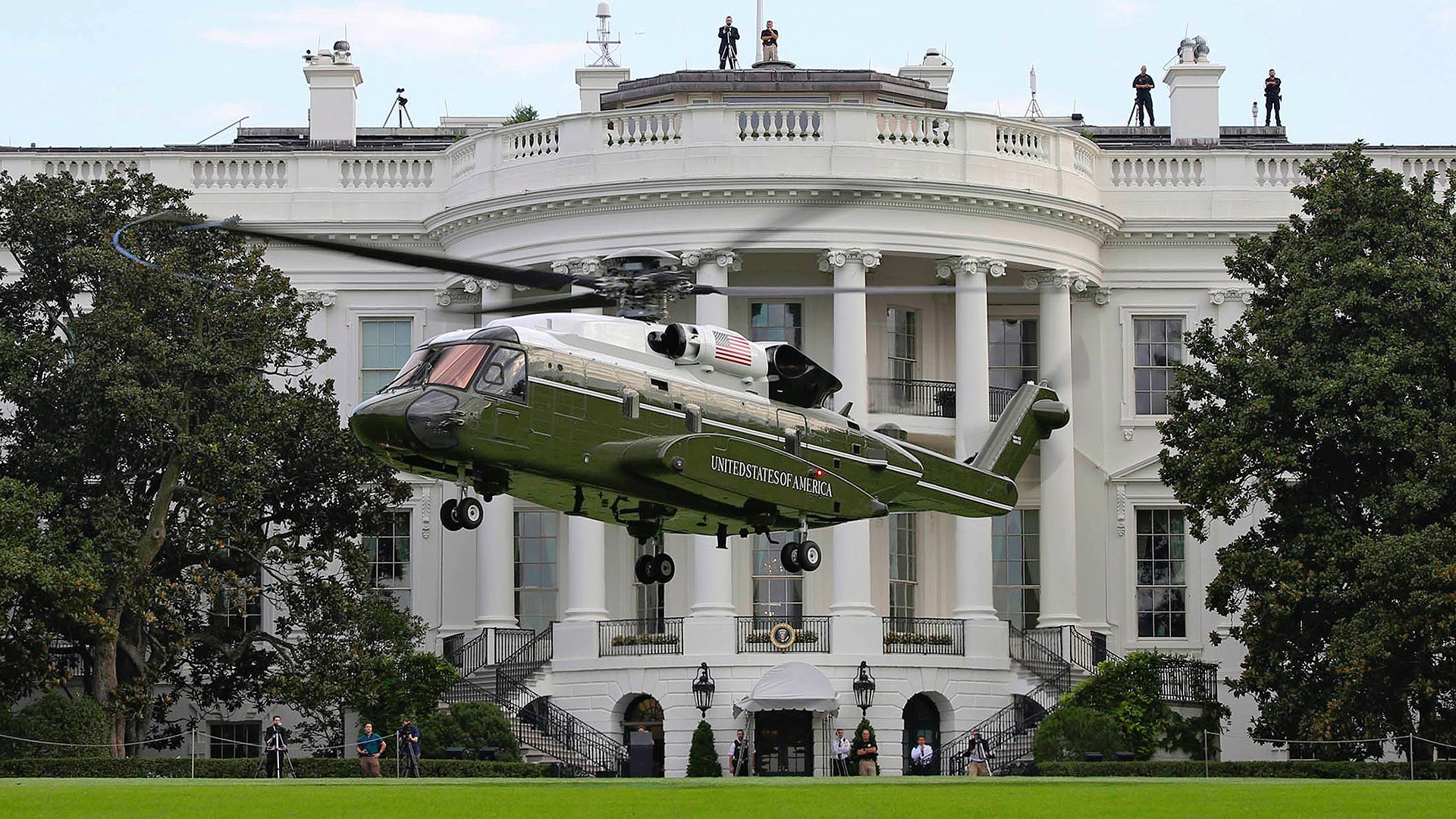The U.S. Marine Corps transition to the VH-92A Patriot as its only helicopter for use in the “Marine One” role shuttling the president, vice president, their families, and their closest advisors at home and abroad, is still underway and now we know it won’t be done till 2030, at the earliest. That is seven years later than the last plan laid out for the VH-92’s ascendency.
Aging VH-3Ds currently used for the mission are set to be retired completely next year. However, the service does expect to keep flying its VH-60Ns through at least 2030 because of their particular ability to operate in hot and/or high-altitude environments. The existing plan, which was disclosed in 2021, declared that the Marines would divested all of the VH-3Ds and VH-60Ns by 2023.

New information about the Marine Corps presidential helicopter fleets, all of which are assigned to Marine Helicopter Squadron One (HMX-1), are contained in a new Aviation Plan released today.

The 2025 Aviation Plan does not say how many VH-3Ds or VH-60Ns are still currently in service. As of 2022, when the Corps put out its last public aviation plan, HMX-1 had 11 VH-3Ds and eight VH-60Ns. The U.S. Navy, in cooperation with the Marines, accepted the delivery of the 23rd and final VH-92 in August 2024. Former President Joe Biden became the first American head of state to fly on one of the Patriots that same month.

“The U.S. Marine Corps declared initial operational capability for the VH-92A in December 2021 and HMX-1 began its introduction into operational missions in 2022 following White House commissioning events,” according to the 2025 Aviation Plan.
“HMX-1 currently has 10 VH-92As to support mission tasking,” it adds. “Once fully transitioned and divested of legacy aircraft, HMX-1 will operate 16 VH-92As.”
Two of the 23 VH-92As are known to be dedicated test aircraft. If HMX-1 is ultimately expected to operate just 16 of the helicopters, it is unclear what will happen to the remaining five airframes. TWZ has reached out to the Marine Corps for more information.
Regardless, “HMX-1 is currently conducting an in-stride transition from legacy VH-3D and VH-60N aircraft to the VH-92A,” per the new aviation plan. “Both [the VH-3D and VH-60N] aircraft have been through a Service Life Extension Program and have sufficient hours to support the mission through full transition to the VH-92A. Aircraft will be retired as they reach airframe hours limits and as the VH-92A takes on more of the mission. VH-3D aircraft are anticipated to continue serving through 2026. Due to their unique capabilities in high/hot environments, the VH-60N aircraft are anticipated to continue serving through 2030 before being fully retired.”

Very hot temperatures and/or high altitudes degrade the performance of helicopters, in general, potentially to a dangerous degree. Types that offer particularly good hot-and-high performance therefore provide clear advantages in those environments over ones that don’t. In line with this, VH-60Ns have been regularly seen over the years supporting presidential visits to relevant locales, including Afghanistan, Somalia, and even the Swiss Alps, among many others.
The retention of at least a portion of the VH-60N fleet through 2030, specifically for its hot-and-high performance, does raise questions about whether the VH-92 will be able to sufficiently meet that need in the future if the new helicopters cannot adequately do so now.
“No major upgrades are currently planned for either [the VH-3D or VH-60N] aircraft,” the 2025 Aviation Plan notes. “However, minor communications upgrades may be necessary to ensure the remaining legacy aircraft are operationally relevant until the squadron has completely transitioned to the VH-92A.”
Communications systems issues were one of the hurdles the VH-92A itself had overcome on its long road to reaching operational service. Sikorsky won a rebooted competition to replace the VH-3D and VH-60N in 2014. That followed the cancellation of plans to acquire the Lockheed Martin VH-71 Kestrel, a derivative of the Anglo-Italian AW101 from AgustaWestland (since subsumed into Leonardo), due to delays and cost growth. Lockheed Martin has since acquired Sikorsky.

Other issues beyond extremely reliable and secure communications, a critical requisite for the Marine One mission, held up the operational employment of the VH-92A. This notably included the helicopter’s exhaust system scorching the White House lawn. Whether changes have been made to the exhaust system to rectify or mitigate that particular problem is unclear.
“The VCD [verification of correction of deficiencies] operational test conducted in FY24 found that 30 open deficiencies had been adequately corrected, 1 has been mitigated through changes to the standard operating procedures, and 1 is no longer applicable due to a WHMO [White House Military Office] policy change regarding the system design,” according to the most recent annual report on the VH-92 program from the Pentagon’s Office of the Director of Operational Test and Evaluation (DOT&E), which was released last Friday. DOT&E did not provide specific details about the deficiencies that were addressed.
The course does now seem increasingly clear for the VH-92A to take over as Marine One. At the same time, while the VH-3Ds are now scheduled to head off into retirement next year, the VH-60Ns, with their hot-and-high capabilities, have years of service still ahead of them.
Contact the author: joe@twz.com
